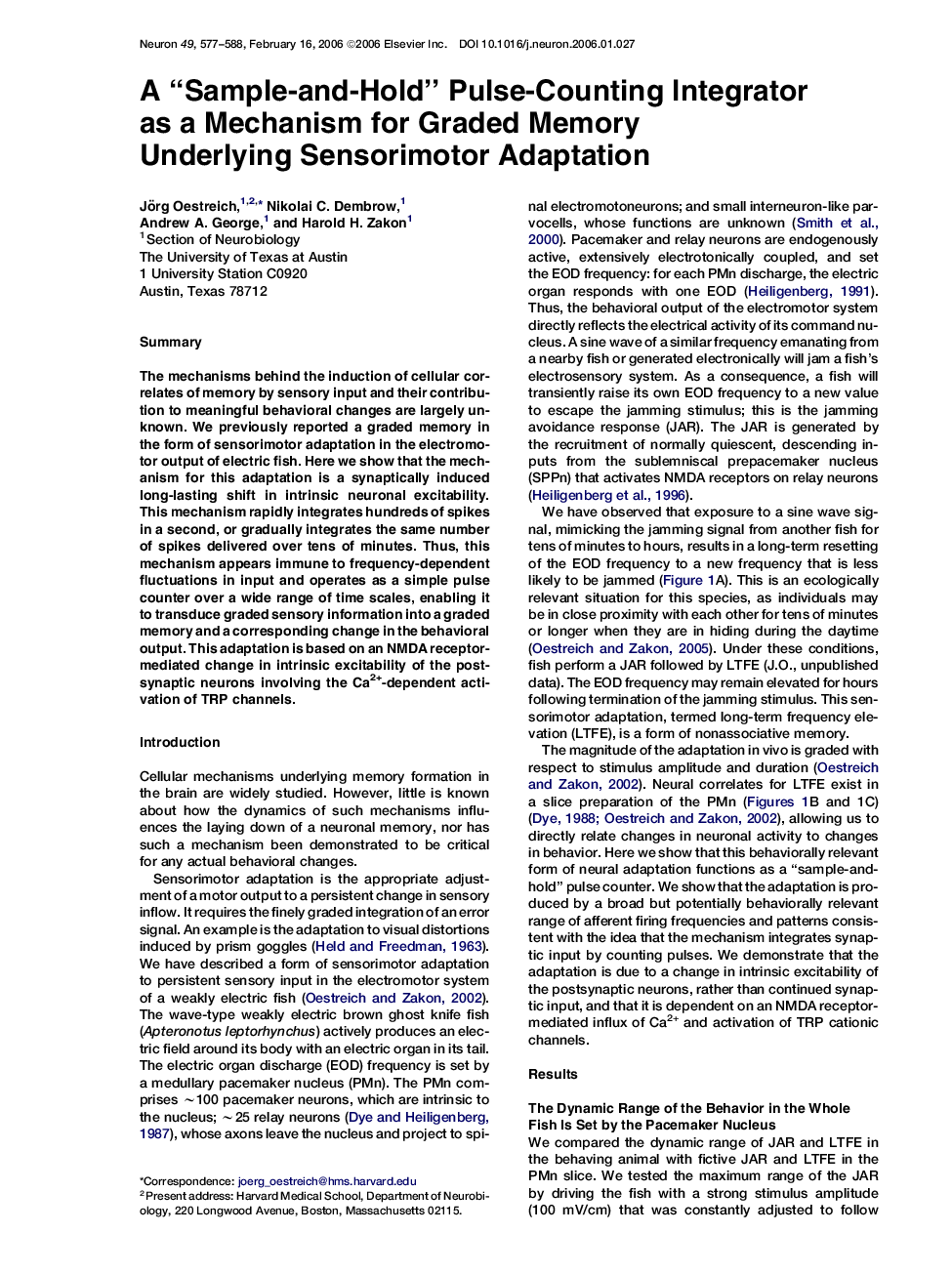| Article ID | Journal | Published Year | Pages | File Type |
|---|---|---|---|---|
| 4323353 | Neuron | 2006 | 12 Pages |
SummaryThe mechanisms behind the induction of cellular correlates of memory by sensory input and their contribution to meaningful behavioral changes are largely unknown. We previously reported a graded memory in the form of sensorimotor adaptation in the electromotor output of electric fish. Here we show that the mechanism for this adaptation is a synaptically induced long-lasting shift in intrinsic neuronal excitability. This mechanism rapidly integrates hundreds of spikes in a second, or gradually integrates the same number of spikes delivered over tens of minutes. Thus, this mechanism appears immune to frequency-dependent fluctuations in input and operates as a simple pulse counter over a wide range of time scales, enabling it to transduce graded sensory information into a graded memory and a corresponding change in the behavioral output. This adaptation is based on an NMDA receptor-mediated change in intrinsic excitability of the postsynaptic neurons involving the Ca2+-dependent activation of TRP channels.
